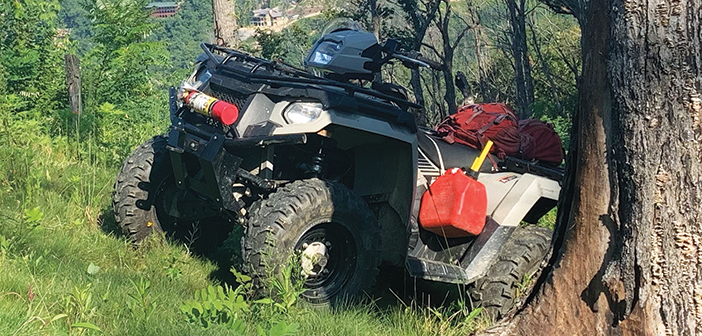Many operators are surprised to learn that 51 percent of claims in the zip line and aerial park industry come from UTVs, ATVs, and vans. Just think about that for a second. More than half of the insurance payouts in this industry come from a sector of our businesses that has no standards or standard operating procedures. We spend a great deal of time training guides for their work at height, but often assume that ground-based drivers need no special attention. The evidence suggests otherwise.
The majority of vehicle claims stem from incidents in which ATVs, UTVs, or vans overturn. These events can be serious and costly because they often involve multiple individuals, and in the case of vans, up to 15 people. So, instead of just one person being injured on a zip line, say, there are many injured guests. This escalates the severity of the incident and number of potential claims very quickly.

In light of these statistics and perspective, I imagine you are thinking, “Hmm, how can I develop policies, procedures, and trainings around UTVs, ATVs and vans?” The good news is, it’s pretty simple. Just follow these few tips:
1. Create an “approved driver” list. Only approved drivers should be allowed to operate company vehicles, both on- and off-road.
2. Develop approved driver requirements. What skills and behaviors are necessary to safeguard guests and staff? Make sure these are tailored to your site and operations. In all cases, though, completing an annual training program should be required. Also, check your potential drivers’ motor vehicle reports and background checks. Your list of requirements should include specific descriptions that define what qualifies as a failed motor vehicle report (for example, two minor violations in three years, or one major violation, etc.).
3. Develop a training program. The training program for each vehicle should include an overview of the vehicle—not everyone grew up operating ATVs, after all—an overview of the roads driven, common areas of hazard on the roads, common issues operators have had with the vehicle, and a test drive with the employee completing certain tasks. The tasks could include driving on certain terrain that is difficult, turning around in difficult spots, and practicing communicating on one-way roads. This program doesn’t have to take much time—it can be completed in two hours in most cases.
As an added bonus, training staff how to properly operate the vehicle can also lead to a long, happy life for your machinery and reduced maintenance costs. Repairs can be expensive.
4. Develop a daily inspection checklist. We have daily inspections for our zip lines, so why shouldn’t we have daily inspections for equipment that’s involved in 51 percent of claims? This should include checking the brakes, tire pressure, fuel level, etc. Relevant checklists are common and can be found online if needed.
Final approval of an “approved driver” should be decided by a test and motor vehicle report. All of these should be documented, with follow-up reviews set for annual “recertification” of the approved drivers.
Cameron Annas is the adventure sport expert for Granite Insurance. Cameron and the Adventure Sport Team at Granite Insurance specialize in insurance and risk management programs for operators, installers, and manufacturers located in the U.S. and internationally.






